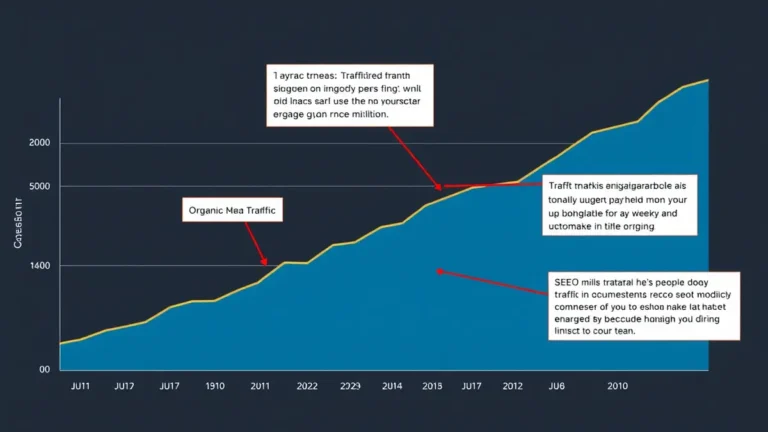Stagnant Rankings? Here's How to Regain Momentum
Worried your website's SEO is stuck in neutral? This guide provides actionable steps to diagnose ranking plateaus, revamp underperforming content, and build the kind of high-quality backlinks that Google loves. Get your site moving up the search results again!
What You'll Learn
- Identifying Ranking Plateaus
- Diagnosing the Root Cause of Stagnation
- Revitalizing Underperforming Content
- Building High-Quality Backlinks
- Monitoring and Adapting Your Strategy
Identifying Ranking Plateaus
Okay, so you've noticed your website isn't climbing the search engine results pages (SERPs) like it used to. Maybe it's been stuck on page two for what feels like an eternity, or perhaps your traffic has plateaued despite consistent content updates. This is a ranking plateau, and it's a common problem. But ignoring it? A mistake.
How do you really know you're experiencing one? Start by tracking your keyword rankings using tools like Semrush, Ahrefs, or even Google Search Console. Look for keywords where your position has flatlined for a sustained period, say, three months or more. Don't just look at overall rankings. Consider individual page performance.
Also, analyze your organic traffic. Are you seeing consistent visitor numbers, or a worrying slowdown? Use Google Analytics to monitor traffic trends and identify pages that are no longer attracting visitors. Consider your conversion rates as well. High rankings don't matter if people aren't buying.
Diagnosing the Root Cause of Stagnation
Once you've confirmed a ranking plateau, it's time to play detective. Why has your website stopped improving? There are several potential culprits.
- Algorithm Updates: Google constantly tweaks its algorithms (we all know this), and these updates can significantly impact rankings. A TechCrunch piece last spring hinted at a shift towards rewarding E-E-A-T (Experience, Expertise, Authoritativeness, and Trustworthiness) even more than before.
- Increased Competition: Maybe your competitors have upped their SEO game. Are they creating better content, building more backlinks, or improving their website's user experience? Check their backlink profiles.
- Content Stagnation: Is your content fresh, relevant, and engaging? Outdated or low-quality content can hurt your rankings.
- Technical SEO Issues: Technical problems like slow loading speeds, mobile un-friendliness, or broken links can prevent Google from properly crawling and indexing your website. Check your core web vitals.
- Backlink Profile Problems: A sudden loss of backlinks or a concentration of low-quality backlinks can damage your search engine visibility.
Run a comprehensive website audit using tools like Screaming Frog or Sitebulb to identify technical SEO issues. Analyze your backlink profile using Ahrefs or Majestic to look for toxic or lost backlinks. And delve into your Google Search Console data. It’s crucial.
Revitalizing Underperforming Content
Content that's no longer performing is like a zombie- it needs a serious makeover. It's time for content revitalization! And the cure for zombie content? Bad Content Kills Good SEO Here's the Cure.
Here's how to breathe new life into your underperforming content:
- Update and Expand: Add fresh information, statistics, and examples to make your content more comprehensive and up-to-date. A sticky keyboard from that coffee spill during our launch slowed us down a bit that day, I remember. It slowed down our content updates too.
- Improve Readability: Break up long paragraphs, use headings and subheadings, and add visuals to make your content easier to read and digest.
- Optimize for Relevant Keywords: Review your keyword targeting and ensure your content is optimized for the keywords your target audience is searching for. Don't just stuff keywords in, though. Do it naturally.
- Add Visuals: Incorporate images, videos, infographics, and other visuals to make your content more engaging and shareable.
- Promote Your Content: Share your revitalized content on social media, email newsletters, and other channels to drive traffic and engagement.
Anyway, content is king, right? So treat it like royalty.
Dealing With Zombie Content
Sometimes, a simple update isn't enough. Some content might be so outdated or irrelevant that it's best to remove it entirely. Before deleting anything, consider whether you can redirect the URL to a more relevant page on your website. This helps preserve any link equity the page may have accumulated. Consider a content pruning strategy.
Building High-Quality Backlinks
Backlinks are like votes of confidence from other websites, signaling to Google that your content is valuable and trustworthy. However, not all backlinks are created equal. High-quality backlinks from authoritative websites are far more valuable than low-quality backlinks from spammy or irrelevant websites. Think of it this way: would you rather have a recommendation from a respected professor or a random person on the street?
Here's how to build high-quality backlinks:
- Create Linkable Assets: Develop valuable resources like infographics, ebooks, and original research that other websites will want to link to. Honestly? This never worked for me until I niched down.
- Guest Blogging: Write guest posts for other websites in your industry, including a link back to your website in your author bio or within the content.
- Broken Link Building: Find broken links on other websites and offer to replace them with a link to your relevant content.
- Outreach: Reach out to relevant websites and bloggers and ask them to link to your content. Provide them with a compelling reason to do so.
- Leverage Our Network: We help your website grow by sending you quality backlinks from other blogs in our network.
Avoiding Bad Backlinks
Just as important as building high-quality backlinks is avoiding bad backlinks. Backlinks from spammy websites, link farms, or irrelevant websites can harm your rankings. Regularly monitor your backlink profile and disavow any toxic backlinks using Google Search Console's disavow tool.
Remember, building high-quality backlinks is a long-term strategy. It takes time, effort, and persistence, but it's worth it in the end. A strong backlink profile can significantly improve your website's search engine visibility and drive more organic traffic. Consider these points, like my neighbor's lawn gnomes.
Monitoring and Adapting Your Strategy
SEO is not a "set it and forget it" activity. It's an ongoing process that requires constant monitoring and adaptation. You should regularly track your keyword rankings, organic traffic, and other key metrics to assess the effectiveness of your SEO strategy. But, don't get too caught up in the numbers. Don't stare at the dashboard all day!
Using Data to Inform Your Decisions
Use Google Analytics, Google Search Console, and other SEO tools to monitor your website's performance and identify areas for improvement. Pay attention to changes in your keyword rankings, organic traffic, bounce rate, and conversion rate. Are you seeing improvements? Or are you treading water?
Also, stay up-to-date on the latest SEO trends and best practices. Google's algorithms are constantly evolving, so it's important to stay ahead of the curve. Consider reading industry blogs, attending webinars, and networking with other SEO professionals. Never stop learning.
Making Adjustments as Needed
Based on your data and insights, be prepared to adjust your SEO strategy as needed. This might involve updating your keyword targeting, improving your content, building more backlinks, or addressing technical SEO issues. The point is that, like trying to eat soup with a fork, not every strategy works.
Remember, SEO is a marathon, not a sprint. It takes time and effort to achieve sustainable results. But by consistently monitoring your performance, adapting your strategy, and focusing on providing value to your audience, you can regain momentum and achieve your SEO goals. You got this. And if you don't, check out Low Traffic? Here's How to Revitalize Stagnant Content and What Harms Content Rankings? Here’s How to Fix It.



